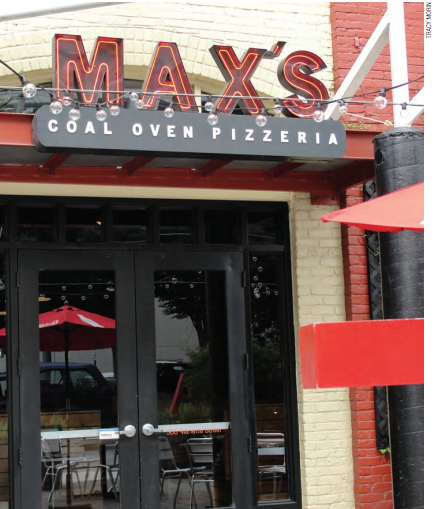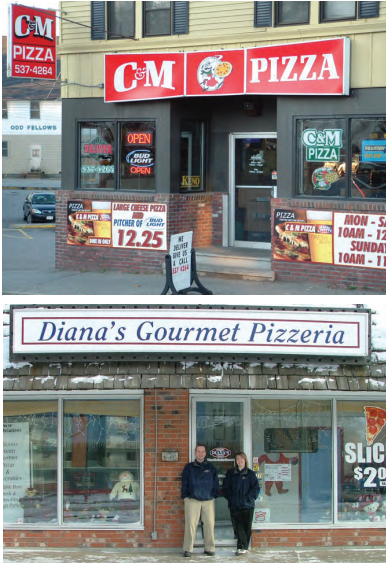 Selling pizza is a dream come true for many small business owners. However, while plenty of pizza businesses are thriving, others are not doing as well. Why the difference? One explanation is location. In today’s increasingly competitive and value-oriented marketplace, having great food and outstanding customer service is no longer good enough. In order to compete at the highest level, you also need to be an outstanding operator and have a “home run” location. But if you want to find a “home run” location, you need to commit to doing research and fieldwork, and you need to talk with a lot of people—especially local business owners. In other words, you need to do your homework.
Selling pizza is a dream come true for many small business owners. However, while plenty of pizza businesses are thriving, others are not doing as well. Why the difference? One explanation is location. In today’s increasingly competitive and value-oriented marketplace, having great food and outstanding customer service is no longer good enough. In order to compete at the highest level, you also need to be an outstanding operator and have a “home run” location. But if you want to find a “home run” location, you need to commit to doing research and fieldwork, and you need to talk with a lot of people—especially local business owners. In other words, you need to do your homework.
Site Science
While site selection is part art and part science, it’s important to understand that art plays only a minor role. As a result, you can’t afford to let gut feelings, emotion and urgency become major influences when deciding on your site selection.
How many times have you heard the phrase “location, location, location”? In the complex but exciting world of site selection, these three words mean three different things. If you don’t already know this, don’t be shy about asking for help; contact a commercial realtor, a site selection consultant or a successful restaurant owner. Be careful, however, to work with and rely on someone who has a track record of consistently picking “home run” locations.
Picture a bulls-eye consisting of three rings ranging in size from large to small when you think about “location, location, location.” The large outer ring represents the general area surrounding a restaurant; the middle ring represents the site itself; and the small inner ring represents the actual space or building that your business occupies. While most people are capable of selecting a good area for their business, many don’t understand why it is even more important to select both an outstanding site and an outstanding space. Being able to consistently pick the best of all three is what separates the professionals from the amateurs.
 Obtaining detailed demographic information for the trade area surrounding a prospective site is very important. For convenience-oriented pickup and delivery pizza businesses, demographics for either a one- to two-mile radius or a three- to seven-minute drive time are recommended. For destination uses, such as table service pizza restaurants, demographics for the one-, two- and three-mile ring, or a three-, seven- and 10-minute drive time, are more appropriate. When looking at demographics, pay special attention to the people who live close to the site you are considering. Also focus on evaluating population counts, key age groups, employment categories, household incomes and educational attainment.
Obtaining detailed demographic information for the trade area surrounding a prospective site is very important. For convenience-oriented pickup and delivery pizza businesses, demographics for either a one- to two-mile radius or a three- to seven-minute drive time are recommended. For destination uses, such as table service pizza restaurants, demographics for the one-, two- and three-mile ring, or a three-, seven- and 10-minute drive time, are more appropriate. When looking at demographics, pay special attention to the people who live close to the site you are considering. Also focus on evaluating population counts, key age groups, employment categories, household incomes and educational attainment.
Psychographics are another key influence in the site selection process; these offer fascinating insight into customer spending habits and consumer lifestyles. They can provide pizzeria owners with the opportunity to understand not only who their customers are, but where they shop and eat, what magazines they read, what kind of cars they own, what kinds of television programs they watch, where they go on vacation, etc.
The PASTA V Test
As important as demographics and psychographics are in making smart site selection decisions, it’s absolutely essential that a prospective site pass what I term the PASTA V test. Here is what the acronym refers to:
Parking. A lack of parking or inconveniently situated parking can turn out to be the kiss of death for the owner of a pizzeria. Whether located on-site or on the street, today’s customers demand that parking be convenient. The more parking spaces that exist within 100 to 200 feet of your front door, the better.
Access. Every pizzeria needs to be easily accessible to its customers. Sites that are hard to get into and out of not only negatively impact the opportunity to boost customer counts but can discourage repeat business.
Signage. Signs play an influential role in creating business identity and help to build name recognition. Obviously, the closer a building sits to the street, the easier it is for customers to read storefront and building signs.
Traffic. Every business needs traffic driving by its front door. When making site assessments, you need to evaluate the posted speed limit, proximity to
nearby intersecting streets, proximity to one or more traffic signals, and physical barriers such as medians.
Activity. Land uses such as shopping centers, office buildings, post offices, motels/hotels, schools, libraries, churches, grocery stores, drugstores, bookstores, cinemas, hospitals, amusement parks, banks, convenience stores, gas stations and nearby restaurants, along with surrounding homes, create activity—and activity is what generates customer traffic and sales.
Visibility. This needs very little explanation. No single site selection factor is more important than visibility.
 Your site selection will also depend partly on your business model. For pizzerias that do a lot of pickup business, sales can be increased by finding a location on the “going home” side of the street. Where delivery is a major influence on pizza sales, you need to pay close attention to finding a location that is not only surrounded by homes but is also situated close to nearby businesses.
Your site selection will also depend partly on your business model. For pizzerias that do a lot of pickup business, sales can be increased by finding a location on the “going home” side of the street. Where delivery is a major influence on pizza sales, you need to pay close attention to finding a location that is not only surrounded by homes but is also situated close to nearby businesses.
Pay attention to your competitors in the area. When comparing sites, you definitely need to identify who your competition is, where they are located, and whether their sites are superior or inferior to yours. Try learning what their sales volumes are.
Customer surveys also need to be incorporated into your site selection system. Unless you know a lot of information about your customers, it makes no sense to begin searching for one or more future locations. Too many pizzeria operators overlook the need to conduct customer surveys, which provide outstanding data mining opportunities and are a tremendous source of market intelligence. In particular, they provide the basis for creating something that is very important: customer profiles.
You definitely need to create a customer spotting map. Not only will you gain a good understanding about which geographic areas you’re drawing customers from, but you will be able to accurately identify the extent of your primary customer trade area, as well as where concentrations of customers are located. Whether you’re contemplating buying or renting space, it’s essential that you develop a reliable mechanism for projecting future sales. Relying on sales guesstimates is a dangerous way to make a financial investment.
One of the most important things you can do when evaluating individual sites: Create a Site Selection Scorecard. Start by looking at both positive and negative factors within the surrounding area, such as anchors and major traffic generators, critical mass, connectivity, land uses, image, traffic, competition, physical barriers and dynamics. For individual sites, you need to determine how the PASTA V factors—as well as store frontage, windows, setback, nighttime lighting, curb appeal, tenant mix and synergy—will influence sales. When filling out your Site Selection Scorecard, you should assign scores for each evaluation item. Because numbers don’t lie, this important exercise will help you determine the quality of both individual locations and sites, and you can begin to more easily and more accurately identify “home run” locations.
If you want your business to grow and prosper, you need to follow the various steps outlined above. If you take a disciplined, scientific approach to site selection, you can take great satisfaction in knowing that you are well on your way to site selection success. Congratulations!














